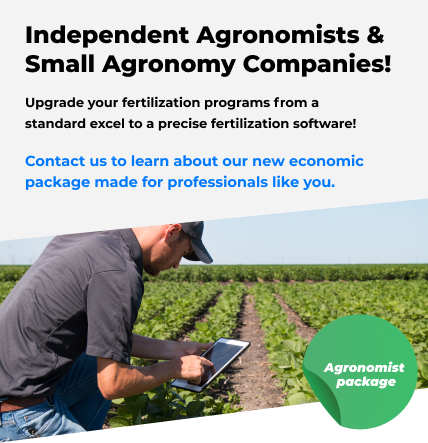

The 2022 edition of our e-book focuses on plant
nutrition and fertilization management practices

Available in English, Spanish and Portuguese

Available in PDF format for offline reading
Improve your technical skills on
soil and plant nutrition.



Developed and created for:
Agronomists
Project Managers
Farmers
Irrigation Designers
Corporate farms
Contract Growers
Fertilizer suppliers
Governments